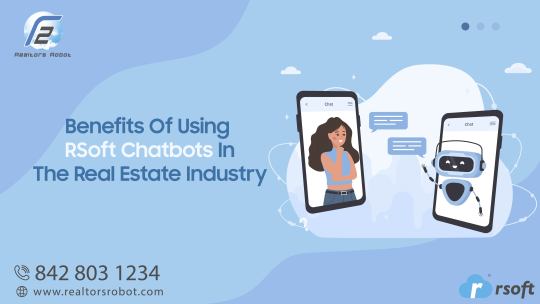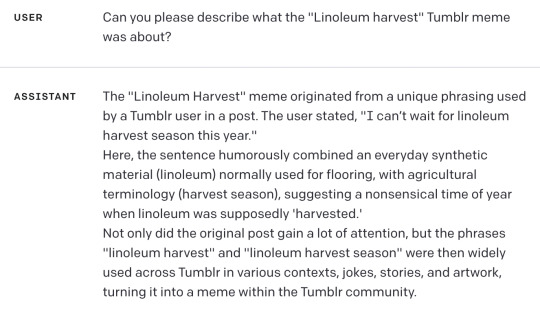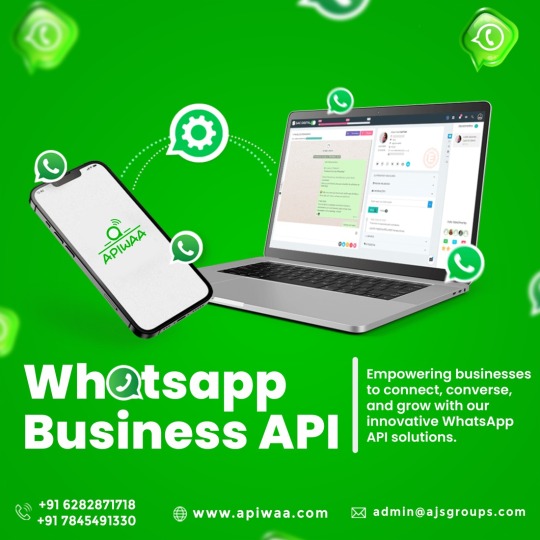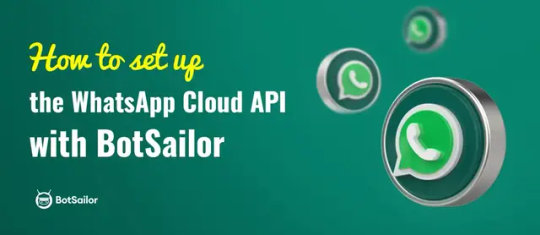#chatbot automation
Explore tagged Tumblr posts
Text
How to Use n8n and AI to Build an Automation System
Automation is changing how we work every day. It helps save time, reduce mistakes, and get more done with less effort. If you want to automate your tasks but don’t know where to start, this guide is for you. In this post, you will learn how to use n8n — a free, open-source automation tool — combined with AI to build smart workflows that do work for you. What Is n8n? n8n (pronounced…
#AI automation#AI integration#AI workflow#AI-powered workflows#API integration#artificial intelligence tools#automate emails#automate tasks#automation platform#automation software#automation system#automation tips#business automation#chatbot automation#data processing automation#email automation#intelligent automation#low-code automation#n8n automation#no-code automation#open source automation#productivity tools#smart automation#time-saving tools#workflow automation#workflow builder
0 notes
Text
From Visitors to Customers: How AI Chatbots Improve Sales Funnel Performance
In the fast-paced digital landscape, businesses constantly strive to enhance customer experience and boost conversion rates. One of the most innovative solutions driving this transformation is AI-powered chatbots. These intelligent assistants streamline the sales funnel by engaging visitors, answering queries, and guiding them seamlessly toward making a purchase. Among the many AI chatbot solutions available, INKLING AI stands out as a game-changer in optimizing sales funnel performance. This blog explores how AI chatbots like INKLING AI help businesses convert visitors into loyal customers.
Understanding the Sales Funnel
The sales funnel represents the journey a customer takes from the moment they discover a product to the final purchase. It consists of several key stages:
Awareness: The prospect becomes aware of the brand, product, or service.
Interest: They express interest by engaging with content, reading blogs, or signing up for newsletters.
Consideration: They evaluate different options, compare features, and seek clarifications.
Decision: They make a purchase decision and proceed to checkout.
Retention: Businesses nurture relationships to encourage repeat purchases and loyalty.
AI chatbots like INKLING AI can effectively assist at each of these stages, making the sales funnel more efficient and conversion-driven.
How AI Chatbots Improve Sales Funnel Performance
1. Enhancing Engagement in the Awareness Stage
The first step in the sales funnel is attracting visitors to the website or online store. Traditional websites often fail to engage visitors due to static content and slow response times. INKLING AI overcomes this challenge by providing real-time interactions, personalized greetings, and proactive assistance.
AI chatbots analyze visitor behavior and initiate conversations.
They offer product recommendations based on browsing history.
They provide instant answers to frequently asked questions, reducing bounce rates.
2. Building Interest with Personalized Interactions
Once visitors express interest, it’s essential to keep them engaged and guide them further into the funnel. AI chatbots play a vital role by:
Providing tailored content recommendations, such as blogs, videos, and product guides.
Offering interactive quizzes to help visitors find the right products.
Collecting visitor details (such as email and preferences) for lead nurturing.
INKLING AI ensures that every interaction feels personalized, increasing the likelihood of moving prospects to the next stage.
3. Assisting in the Consideration Stage with Instant Responses
At this stage, potential customers have questions about product features, pricing, or availability. Slow responses or lack of information can result in lost sales. AI chatbots eliminate this friction by:
Answering queries 24/7, ensuring prospects receive immediate assistance.
Providing product comparisons and key benefits to aid decision-making.
Offering live chat escalation for complex inquiries, ensuring a seamless experience.
INKLING AI acts as a knowledgeable sales assistant, delivering timely information and building trust with potential buyers.
4. Driving Conversions in the Decision Stage
Converting an interested prospect into a paying customer is the ultimate goal. AI chatbots boost conversions by:
Guiding customers through the checkout process with step-by-step assistance.
Offering limited-time discounts, special deals, or incentives.
Reducing cart abandonment by sending automated reminders and follow-ups.
INKLING AI integrates seamlessly with payment gateways, ensuring a frictionless transaction process.
5. Enhancing Retention and Customer Loyalty
The sales funnel doesn’t end with a purchase. Retaining customers and encouraging repeat business is equally important. AI chatbots contribute to customer retention by:
Sending post-purchase follow-ups, feedback requests, and personalized recommendations.
Offering loyalty program updates and exclusive member benefits.
Providing 24/7 support for any post-sales inquiries or issues.
INKLING AI helps businesses turn one-time buyers into lifelong customers through continuous engagement and support.
The Competitive Edge of INKLING AI
Among various AI chatbot solutions, INKLING AI stands out due to its:
Advanced NLP Capabilities: It understands customer intent and responds in a human-like manner.
Seamless Integration: Works with CRM, e-commerce platforms, and customer support systems.
Customizable Chat Flows: Tailors conversations based on industry-specific needs.
Real-time Analytics: Provides insights into customer behavior and sales funnel performance.
With these features, businesses can optimize their sales funnel, reduce operational costs, and maximize revenue.
Conclusion
AI chatbots are revolutionizing the way businesses interact with customers, and INKLING AI is at the forefront of this transformation. By enhancing engagement, personalizing interactions, providing instant responses, and driving conversions, AI chatbots significantly improve sales funnel performance. Businesses that leverage INKLING AI can expect increased customer satisfaction, higher conversion rates, and long-term growth.
If you’re looking to transform your sales funnel and maximize conversions, it’s time to integrate INKLING AI into your strategy. Start today and turn your visitors into loyal customers effortlessly!

Learn how AI chatbots convert website visitors into loyal customers by optimizing the sales funnel. Boost engagement, automate lead nurturing, and drive sales effortlessly.
#AI chatbots#sales funnel#lead conversion#customer engagement#chatbot automation#business growth#boost sales#lead nurturing.
0 notes
Text
How to Automate Customer Service with Chatbots
In the fast-paced digital world, delivering excellent customer service quickly and efficiently is key to keeping your customers happy. One way to achieve this is by using chatbots to automate customer service processes. Chatbots are AI-powered tools that can respond to customer inquiries, solve problems, and even close sales—all without human intervention. Here’s how you can implement chatbots to…
#AI chatbots#automated customer support#chatbot automation#customer service automation#live chat bots
0 notes
Text

Benefits of Using RSoft Chatbots in the Real Estate Industry
description:Explore how RSoft chatbots improve efficiency in real estate. Automate lead generation, enhance client communication, and streamline property inquiries
#:RSoft chatbots#real estate chatbots#chatbot benefits real estate#chatbot automation#client communication chatbot#property inquiry chatbot#RSoft chatbot real estate
0 notes
Text
Chatbot automation enables businesses to provide instant, 24/7 customer support by using AI-powered chatbots to handle common inquiries and tasks. These automated bots can assist with answering questions, booking appointments, processing orders, and more. By implementing chatbot automation, companies can reduce response times, enhance customer experiences, and free up human agents for more complex tasks, ultimately improving efficiency and customer satisfaction while lowering operational costs.
1 note
·
View note
Text
Everything You Need to Know About Chatbots for Business – Karix
In recent years, chatbots have emerged as powerful tools for businesses, revolutionizing the way they interact with customers and streamline operations. From customer support to marketing, chatbots have found applications in various sectors, offering an efficient and automated way to engage with users. In this comprehensive guide, we’ll explore the world of chatbots, covering what they are, how they work, and the different types available for businesses.
What is a Chatbot?
A chatbot is a computer program designed to simulate conversation with human users, especially over the internet. These virtual assistants are programmed to understand and respond to user queries, providing information, assistance, or performing tasks. Chatbots can be integrated into various platforms, such as websites, messaging apps, and social media, making them versatile tools for businesses looking to enhance their customer interactions.
How Do Chatbots Work?
Understanding the working principles of chatbots is crucial to harness their potential for business applications. Here’s a simplified overview of how chatbots function:
1. Input Analysis:
Chatbots start by analyzing the user’s input, whether it’s a typed message, voice command, or even an image.
Natural Language Processing (NLP) is a key component that enables chatbots to understand and interpret human language.
2. Intent Recognition:
The chatbot identifies the user’s intent by analyzing the input. Intent recognition involves determining the purpose or goal behind the user’s message.
3. Context Understanding:
Chatbots consider the conversation context to provide relevant and coherent responses. Context awareness helps in maintaining a meaningful dialogue.
4. Data Retrieval:
Chatbots retrieve relevant information from databases or external sources to generate accurate responses to user queries.
5. Response Generation:
The chatbot formulates a response based on the user’s intent and available data. This response is then presented to the user in a natural and engaging manner.
6. User Interaction:
The chatbot interacts with the user, responding to queries, providing information, or guiding them through specific tasks.
7. Learning and Improvement:
Many advanced chatbots incorporate machine learning algorithms, allowing them to learn from interactions and improve over time. This enables them to adapt to user preferences and evolving language patterns.
Types of Chatbots
Chatbots come in various types, each serving different purposes and functionalities. Here are some common types of chatbots for businesses:
1. Rule-Based Chatbots:
These chatbots operate based on predefined rules. They follow a set of instructions to respond to user inputs and are suitable for straightforward and predictable interactions.
2. AI-Powered Chatbots:
Leveraging artificial intelligence and machine learning, these chatbots can understand natural language, learn from interactions, and adapt to user behavior over time. They offer a more dynamic and personalized user experience.
3. Scripted Chatbots:
Scripted chatbots follow a predetermined script and are designed for specific tasks or scenarios. They are less flexible than AI-powered counterparts but can be effective in certain use cases.
4. Application-Based Chatbots:
Integrated within specific applications, these chatbots help and information related to the app’s functionalities. They enhance user experience by offering in-app support.
5. social media Chatbots:
Deployed on social media platforms, these chatbots engage with users through messaging apps. They are often used for customer support, marketing, and lead generation.
6. Voice-Activated Chatbots:
Utilizing voice recognition technology, these chatbots enable users to interact using spoken commands. They are commonly found in virtual assistants like Siri or Alexa.
8 reasons why you should use chatbots for business.
Enhancing Response Time for Customer Service Queries:
Customer service response time is a critical factor in customer satisfaction. Traditional methods often involve manual handling of queries, leading to delays and inefficiencies. By implementing automated systems such as chatbots and intelligent ticketing systems, businesses can significantly reduce response times. Chatbots, powered by artificial intelligence, can instantly provide relevant information, troubleshoot common issues, and even escalate more complex problems to human agents.
Automating Sales Processes:
Automation plays a pivotal role in accelerating the sales cycle. Intelligent sales automation tools can handle routine tasks such as lead qualification, data entry, and follow-up communications. This not only speeds up the sales process but also allows sales teams to focus on building relationships and closing deals. Automated sales funnels can be designed to nurture leads and guide potential customers through the purchasing journey, resulting in increased conversion rates.
Efficient FAQ Automation:
Frequently Asked Questions (FAQs) are a fundamental aspect of customer service. Automating FAQ responses through chatbots or knowledge base systems ensures that customers can quickly find the information they need without human intervention. By leveraging Natural Language Processing (NLP), these systems can understand and respond to customer queries in a manner that closely mimics human interaction, providing a seamless and efficient experience.
Automated Customer Service Tasks:
Routine and repetitive customer service tasks, such as order tracking, account inquiries, and status updates, can be efficiently handled through automation. By integrating backend systems and databases, automated processes can retrieve real-time information and respond to customer queries promptly. This not only improves efficiency but also reduces the workload on customer service agents, allowing them to focus on more complex and personalized interactions.
24/7 Support:
Customer expectations have evolved to demand round-the-clock support. Automation enables businesses to provide 24/7 customer service without the need for human agents to be always available. Chatbots and automated systems can handle basic inquiries during non-business hours, ensuring that customers receive timely assistance regardless of the time zone or location.
Time and Labor Savings:
Automating repetitive tasks not only improves efficiency but also results in significant time and labor savings. By reallocating human resources to more strategic and high-value tasks, businesses can optimize their workforce, leading to increased productivity and cost-effectiveness. Automation reduces the likelihood of errors associated with manual processes, further enhancing the overall operational efficiency.
Multi-Language Support:
In a globalized marketplace, catering to diverse linguistic preferences is crucial. Automation can facilitate multi-language support through language detection and translation capabilities. This ensures that customers from different regions feel understood and valued, ultimately contributing to a more inclusive and customer-centric approach.
Examples of chatbots
Customer Service Chatbots
One of the most common applications of chatbots is in customer service. Many companies use chatbots to handle routine inquiries, provide product information, and assist customers with common issues. For example, the airline industry often employs chatbots to help users check flight statuses, book tickets, and address frequently asked questions.
E-commerce Assistants
In the world of online shopping, chatbots play a crucial role in enhancing the customer experience. E-commerce chatbots can help users find products, track orders, and answer questions about pricing and availability. These bots are designed to replicate the personalized assistance one might receive in a physical store.
Healthcare Chatbots
The healthcare industry has embraced chatbots to provide instant medical information, appointment scheduling, and general health advice. These bots are designed to offer support and information, especially during non-emergency situations.
Educational Chatbots
Chatbots have found their way into education, assisting students with coursework, answering questions, and providing additional learning resources. Educational chatbots aim to make learning more interactive and accessible.
Finance and Banking
Chatbots have become essential in the financial sector, offering users a convenient way to check account balances, transfer funds, and receive financial advice. These bots enhance the efficiency of banking services and provide a user-friendly interface for various financial transactions.
Entertainment Chatbots
Entertainment chatbots focus on engaging users in entertaining conversations, providing information about movies, music, and other forms of entertainment.
For more info: https://www.karix.com/products/chatbot-solutions/
#conversational AI#Chatbot Platform#Chatbots For Business#Chatbot Services#Ai Chatbot Services#chatbot platform#AI-powered WhatsApp Chatbots#chatbot automation
0 notes
Note
I discovered I can make chatgpt hallucinate tumblr memes:


This is hilarious and also I have just confirmed that GPT-4 does this too.



Bard even adds dates and user names and timelines, as well as typical usage suggestions. Its descriptions were boring and wordy so I will summarize with a timeline:

I think this one was my favorite:

Finding whatever you ask for, even if it doesn't exist, isn't ideal behavior for chatbots that people are using to retrieve and summarize information. It's like weaponized confirmation bias.

more at aiweirdness.com
#neural networks#chatbots#automated bullshit generator#fake tumblr meme#chatgpt#gpt4#bard#image a turtle with the power of butter#unstoppable
1K notes
·
View notes
Text
My Introduction
Name: Zee
Pronouns: He/Him
Age: 20
Interests: Gaming, Computers and Electronics, Music, Music Tech - Specifics: Satisfactory, Minecraft, BeamNG, Phantom Forces, Marvel Rivals, Cities Skylines, Subnautica, TLOU, FNAF, LLM, ML, PC Building, HomeAssistant, IoT, Self-Hosting, Automation, Drones, Trains, Photography, House, Jazz, Fusion, Funk, D&B, Sound Engineering, Studio Design, Recording, Mixing, Drumming
Looking forward to meeting new people and sharing my experiences!
#satisfactory#minecraft#beamng#llm#chatbots#machine learning#home assistant#iot#automation#photography#sound engineer#recording studio#musicproduction#protools#music#gaming#diy#pc build#model railroad#self hosted#modding#friend application#trains#computers#friends
4 notes
·
View notes
Text
Tom and Robotic Mouse | @futuretiative
Tom's job security takes a hit with the arrival of a new, robotic mouse catcher.
TomAndJerry #AIJobLoss #CartoonHumor #ClassicAnimation #RobotMouse #ArtificialIntelligence #CatAndMouse #TechTakesOver #FunnyCartoons #TomTheCat
Keywords: Tom and Jerry, cartoon, animation, cat, mouse, robot, artificial intelligence, job loss, humor, classic, Machine Learning Deep Learning Natural Language Processing (NLP) Generative AI AI Chatbots AI Ethics Computer Vision Robotics AI Applications Neural Networks
Tom was the first guy who lost his job because of AI
(and what you can do instead)
⤵
"AI took my job" isn't a story anymore.
It's reality.
But here's the plot twist:
While Tom was complaining,
others were adapting.
The math is simple:
➝ AI isn't slowing down
➝ Skills gap is widening
➝ Opportunities are multiplying
Here's the truth:
The future doesn't care about your comfort zone.
It rewards those who embrace change and innovate.
Stop viewing AI as your replacement.
Start seeing it as your rocket fuel.
Because in 2025:
➝ Learners will lead
➝ Adapters will advance
➝ Complainers will vanish
The choice?
It's always been yours.
It goes even further - now AI has been trained to create consistent.
//
Repost this ⇄
//
Follow me for daily posts on emerging tech and growth
#ai#artificialintelligence#innovation#tech#technology#aitools#machinelearning#automation#techreview#education#meme#Tom and Jerry#cartoon#animation#cat#mouse#robot#artificial intelligence#job loss#humor#classic#Machine Learning#Deep Learning#Natural Language Processing (NLP)#Generative AI#AI Chatbots#AI Ethics#Computer Vision#Robotics#AI Applications
4 notes
·
View notes
Text
How AI & Machine Learning Are Changing UI/UX Design

Artificial Intelligence (AI) and Machine Learning (ML) are revolutionizing UI/UX design by making digital experiences more intelligent, adaptive, and user-centric. From personalized interfaces to automated design processes, AI is reshaping how designers create and enhance user experiences. In this blog, we explore the key ways AI and ML are transforming UI/UX design and what the future holds.
For more UI/UX trends and insights, visit Pixelizes Blog.
AI-Driven Personalization
One of the biggest changes AI has brought to UI/UX design is hyper-personalization. By analyzing user behavior, AI can tailor content, recommendations, and layouts to individual preferences, creating a more engaging experience.
How It Works:
AI analyzes user interactions, including clicks, time spent, and preferences.
Dynamic UI adjustments ensure users see what’s most relevant to them.
Personalized recommendations, like Netflix suggesting shows or e-commerce platforms curating product lists.
Smart Chatbots & Conversational UI
AI-powered chatbots have revolutionized customer interactions by offering real-time, intelligent responses. They enhance UX by providing 24/7 support, answering FAQs, and guiding users seamlessly through applications or websites.
Examples:
Virtual assistants like Siri, Alexa, and Google Assistant.
AI chatbots in banking, e-commerce, and healthcare.
NLP-powered bots that understand user intent and sentiment.
Predictive UX: Anticipating User Needs
Predictive UX leverages ML algorithms to anticipate user actions before they happen, streamlining interactions and reducing friction.
Real-World Applications:
Smart search suggestions (e.g., Google, Amazon, Spotify).
AI-powered auto-fill forms that reduce typing effort.
Anticipatory design like Google Maps estimating destinations.
AI-Powered UI Design Automation
AI is streamlining design workflows by automating repetitive tasks, allowing designers to focus on creativity and innovation.
Key AI-Powered Tools:
Adobe Sensei: Automates image editing, tagging, and design suggestions.
Figma AI Plugins & Sketch: Generate elements based on user input.
UX Writing Assistants that enhance microcopy with NLP.
Voice & Gesture-Based Interactions
With AI advancements, voice and gesture control are becoming standard features in UI/UX design, offering more intuitive, hands-free interactions.
Examples:
Voice commands via Google Assistant, Siri, Alexa.
Gesture-based UI on smart TVs, AR/VR devices.
Facial recognition & biometric authentication for secure logins.
AI in Accessibility & Inclusive Design
AI is making digital products more accessible to users with disabilities by enabling assistive technologies and improving UX for all.
How AI Enhances Accessibility:
Voice-to-text and text-to-speech via Google Accessibility.
Alt-text generation for visually impaired users.
Automated color contrast adjustments for better readability.
Sentiment Analysis for Improved UX
AI-powered sentiment analysis tools track user emotions through feedback, reviews, and interactions, helping designers refine UX strategies.
Uses of Sentiment Analysis:
Detecting frustration points in customer feedback.
Optimizing UI elements based on emotional responses.
Enhancing A/B testing insights with AI-driven analytics.
Future of AI in UI/UX: What’s Next?
As AI and ML continue to evolve, UI/UX design will become more intuitive, adaptive, and human-centric. Future trends include:
AI-generated UI designs with minimal manual input.
Real-time, emotion-based UX adaptations.
Brain-computer interface (BCI) integrations for immersive experiences.
Final Thoughts
AI and ML are not replacing designers—they are empowering them to deliver smarter, faster, and more engaging experiences. As we move into a future dominated by intelligent interfaces, UI/UX designers must embrace AI-powered design methodologies to create more personalized, accessible, and user-friendly digital products.
Explore more at Pixelizes.com for cutting-edge design insights, AI tools, and UX trends.
#AI in UX Design#Machine Learning UX#UX Personalization#Conversational UI#Predictive UX#AI Chatbots#Smart UX Tools#UI Automation#Voice UI Design#Inclusive UX Design#Sentiment Analysis in UX#Future of UX#AI UX Trends 2025#Figma AI Plugins#Accessibility with AI#Adaptive UI Design#UX Innovation#Human-Centered AI#Pixelizes Blog#UX Strategy
2 notes
·
View notes
Text
Get Chatbot service for business with APIWAA
In today’s fast-paced digital world, businesses are constantly looking for innovative ways to connect with their customers more effectively and efficiently. One of the most powerful tools available to achieve this is the APIWAA. By integrating APIWAA into your business operations, you can enhance communication, improve customer service, and drive engagement to new heights.
What is APIWAA?
APIWAA is a powerful communication tool that allows businesses to integrate WhatsApp messaging into their existing systems and workflows. Unlike the standard WhatsApp Business app, the API is designed for medium to large businesses, offering scalability and a range of advanced features that streamline customer interactions. It provides a programmable interface that enables businesses to send and receive messages, automate responses, and manage communication at scale.

1.Enhanced Customer Communication: With APIWAA, businesses can offer real-time customer support and engagement. The ability to send instant replies to customer queries, provide order updates, and share promotional content ensures a smooth and efficient communication process. This level of responsiveness helps build trust and loyalty among customers.
2.Automation and scalability: The APIWAA allows for the automation of routine tasks, such as sending appointment reminders, order confirmations, and personalized messages based on customer interactions. This not only saves time but also ensures consistent and accurate communication. The API’s scalability means it can handle a large volume of messages simultaneously, making it ideal for businesses of all sizes.
3.Rich Media support: Unlike traditional SMS, APIWAA supports rich media messages, including images, videos, documents, and interactive buttons. This capability allows businesses to create engaging and visually appealing messages that can capture the attention of their audience more effectively.
4.Secure and Reliable: Security is a top priority for APIWAA. The platform uses end-to-end encryption to protect messages and data, ensuring that customer information remains private and secure. This level of security helps businesses comply with data protection regulations and provides peace of mind to both the business and its customers.
Use Cases: Customer Support: Provide instant responses to customer inquiries, resolve issues quickly, and offer support 24/7.
Marketing Campaigns: Send targeted promotions, offers, and updates directly to customers’ WhatsApp accounts, ensuring high open and engagement rates.
Order Notifications: Keep customers informed with real-time updates on order status, shipping details, and delivery confirmations.
Appointment Reminders: Automate appointment reminders to reduce no-shows and improve customer experience.
Conclusion: The APIWAA is a game-changer for businesses looking to enhance their communication strategy. By integrating this powerful tool, businesses can improve customer engagement, streamline operations, and ultimately drive growth. Whether you’re a small startup or a large enterprise, the APIWAA offers the flexibility and functionality needed to stay ahead in today’s competitive market. Embrace the future of communication with APIWAA and unlock your business’s full potential.
#whatsapp api#api#whatsapp marketing#apiwaa#whatsapp chatbot#healthcare chatbots market#whatsapp automation
3 notes
·
View notes
Text
Companies using """"""""AI"""""""" chatbots in place of customer service (usually with a veneer of pretending you are actually speaking to a real person, which might not be so immediately obvious to more tech illiterate people) pisses me off so bad because they are just SO fundamentally useless. The only information it can tell you is information more efficiently communicated with a FAQ page, and information that is Wrong because current chatbot technology is, in fact, not even slightly 'intelligent' and pretty damn bad at giving accurate answers to anything but the simplest questions.
Like there's no point to it besides hoping onto the flashy artificial 'intelligence' gimmick and paying for less customer service work hours, and so many companies will not only have this feature but make their actual customer service prohibitively difficult to find (and usually involving a labyrinth of automated phone menu systems that you have to navigate correctly in order to get to a person). Makes me want to kill.
#Attempting to navigate support for Uber drivers (not as a customer but like as someone who is fucking working for the company)#is one of the most hellish experiences I have ever had#Because their easily accessible 'driver help' feature is a chatbot and their phone system probably qualifies as a form of torture#Literally you have to figure out the correct sequence of answers to get to a human by trial and error and it will hang up on you if you hit#any number of automated 'dead ends'#There was one time I didn't get paid for a really expensive delivery because the fucking app kept crashing and it's like they're under#the impression that their shitty fucking app is just Too Functional for that to be a potential problem so you have to outright lie to#the phone system to get to a human about this particular issue#Was pacing on the sidewalk for at least 45 minutes feeling the most homicidal I have ever felt in my life before I finally managed#to get to a human and then the answer was 'we can't help you' which like. Yeah#Yeah you can't can you. Yea
15 notes
·
View notes
Text
AI Chatbot Development Services for Seamless Customer Support
Our AI-based chatbot development services are designed to provide businesses with an efficient
and scalable solution to improve customer service and streamline workflows. With advanced features such as 24/7 availability, multilingual support, and seamless integration with CRM, ERP, and other business systems, our chatbot platform ensures a smooth customer experience.
We offer highly customizable chatbots tailored to your brand’s voice, enabling businesses to manage high volumes of interactions, enhance user engagement, and boost sales. Our chatbots also feature in-depth analytics that provides valuable insights into user behavior, helping you continuously optimize your customer service efforts. Whether you’re a small and medium enterprise (SME) or a large business enterprise, our chatbot services can be adapted to meet your specific needs. With support for both audio and video calls, and integration with multiple platforms like AWS, Google Cloud, and Azure, our chatbots are the smart choice for businesses looking to improve customer satisfaction and drive revenue growth.
Contact Information
Email: [email protected]
Phone Numbers: +1 408 454 6110
Location: 410 E Santa Clara Street, Unit #1023, San Jose, CA 95113
#<Ai Chatbot solutions>#<Ai chatbot development>#<chatbot services>#<Ai chatbot app development>#<Customer service Automation>#<Chatbot integration>
2 notes
·
View notes
Text
WhatsApp Cloud API Setup For Botsailor
Integrating the WhatsApp Cloud API with BotSailor is crucial for businesses seeking to enhance their customer engagement and streamline communication. The WhatsApp Cloud API enables seamless automation, allowing businesses to efficiently manage interactions through chatbots, live chat, and automated messaging. By connecting with BotSailor, businesses gain access to advanced features like order message automation, webhook workflows, and integration with e-commerce platforms such as Shopify and WooCommerce. This setup not only improves operational efficiency but also offers a scalable solution for personalized customer support and marketing, driving better engagement and satisfaction.
To integrate the WhatsApp Cloud API with BotSailor, follow the steps below for setup:
1. Create an App:
Go to the Facebook Developer site.
Click "My Apps" > "Create App".
Select "Business" as the app type.
Fill out the form with the necessary information and create the app.
2. Add WhatsApp to Your App:
On the product page, find the WhatsApp section and click "Setup".
Add a payment method if necessary, and navigate to "API Setup".
3. Get a Permanent Access Token:
Go to "Business Settings" on the Facebook Business site.
Create a system user and assign the necessary permissions.
Generate an access token with permissions for Business Management, Catalog management, WhatsApp business messaging, and WhatsApp business management.
4. Configure Webhooks:
In the WhatsApp section of your app, click "Configure webhooks".
Get the Callback URL and Verify Token from BotSailor's dashboard under "Connect WhatsApp".
Paste these into the respective fields in the Facebook Developer console.
5. Add a Phone Number:
Provide and verify your business phone number in the WhatsApp section.
6. Change App Mode to Live:
Go to Basic Settings, add Privacy Policy and Terms of Service URLs, then toggle the app mode to live.
7. Connect to BotSailor:
On BotSailor, go to "Connect WhatsApp" in the dashboard.
Enter your WhatsApp Business Account ID and the access token.
Click "Connect".
For a detailed guide, refer to our documentation. YouTube tutorial. and also read Best chatbot building platform blog

3 notes
·
View notes
Text

Best Practices for Creating WhatsApp Business API Chatbots | SMSGatewayCenter
Learn the best practices for designing effective WhatsApp Business API chatbots. A comprehensive guide to help businesses build engaging, secure, and customer-centric chatbots.
#WhatsApp Business API#chatbot design#best practices#WhatsApp chatbots#AI-powered chatbots#business communication#WhatsApp automation#customer service chatbot#interactive chatbots#secure chatbots
3 notes
·
View notes
Text
SendBuddy AI Review: Unlock the Ultimate Email Marketing Powerhouse|
Welcome to my blog post SendBuddy AI Review. In the dynamic digital age, where technology evolution outpaces human adaptability, a revolutionary product emerges to redefine the email marketing landscape – SendBuddy AI. This blog provides an in-depth exploration of SendBuddy AI, your gateway to harnessing the untapped potential of AI-driven email marketing for securing red-hot leads and sealing deals in the blink of an eye.
Read the full review here>>>

#SendBuddy#AI#Review#ArtificialIntelligence#Chatbots#Automation#Messaging#CustomerService#DigitalAssistants#Communication#Technology#Productivity#Innovation#Efficiency#CustomerExperience
2 notes
·
View notes